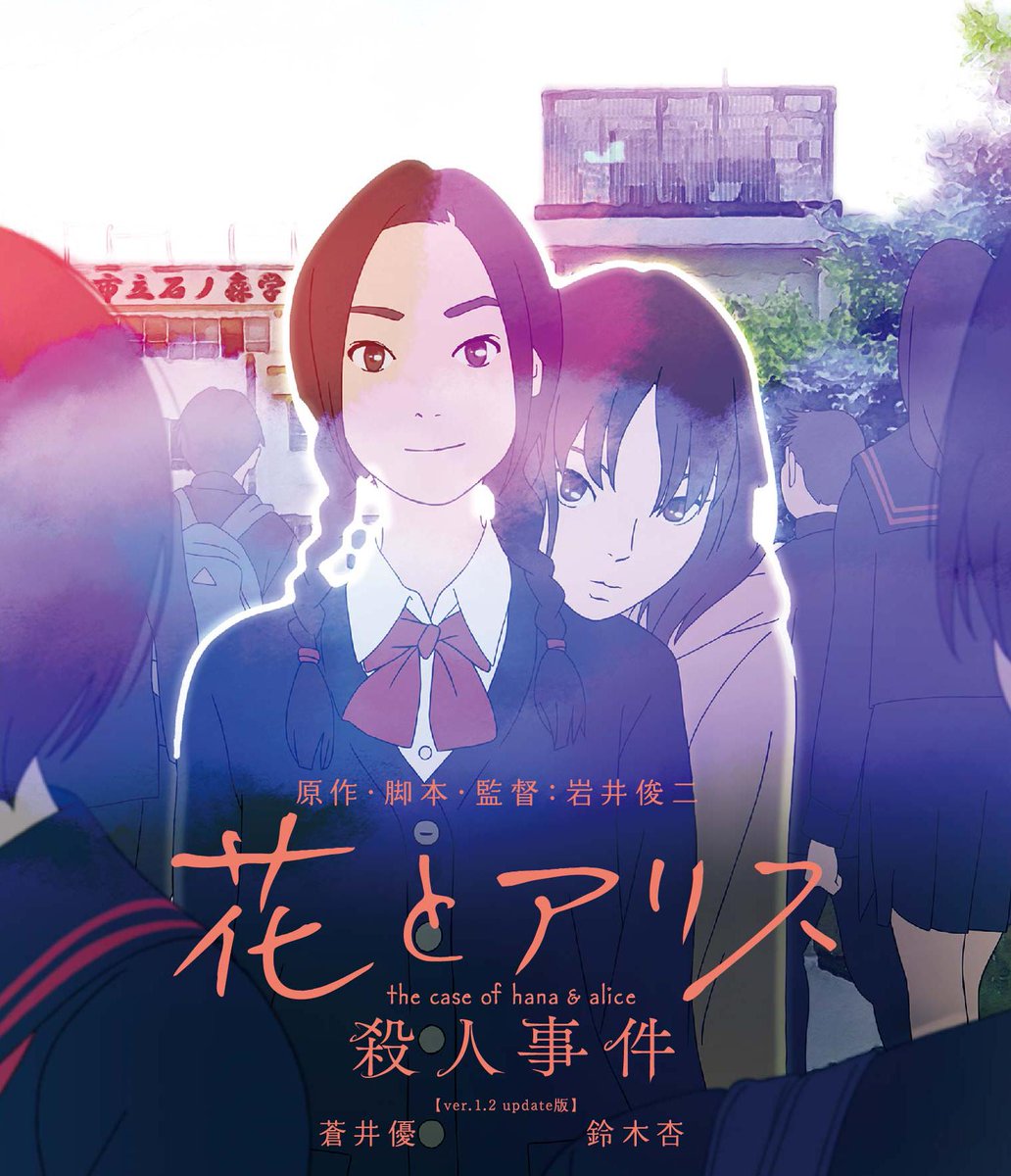Director: Shunji Iwai
Screenplay: Shunji Iwai
Cast: Yū Aoi as Tetsuko
"Alice" Arisugawa; Anne Suzuki as Hana Arai; Ryo Katsuji as Kotaro
Yuda; Haru Kuroki as Ogino; Tae Kimura as Yuki Sakaki; Sei Hiraizumi as Kenji
Kuroyanagi; Shoko Aida as Kayo Arisugawa; Ranran Suzuki as Mutsu Mutsumi; Tomohiro
Kaku as Tomonaga; Midoriko Kimura as Tomomi Arai
Viewed in Japanese with English Subtitles
Today we have a curious one-off
in that the director of Hana & Alice
is not an anime industry director but Shunji
Iwai, a well regarded Japanese director behind titles like All About Lily Chou-Chou (2001), a
figure still obscure to many but is held highly by others who know of him. In context,
The Case of Hana & Alice follows
from Vampire (2011), an American set
horror film which qualifies as a tangent in itself as his first English
language film, whilst the film I am talking about today makes more sense when
you know it's a prequel to a live action 2004 production of his called Hana and Alice.
That the same leads Yū Aoi (as Alice) and Anne Suzuki (as Hana) have return
explains the choice for animation as time has passed for this tale following
two schoolgirls. We are first introduced to who we learn to be Alice, the other
Hana not fully introduced until considerably later on, a mysterious girl next
door to Alice's new home who keeps in her bedroom as a hikikomori. Live action
directors making animation is rare, the likelihood for more animators to make
live action films, with one of the few exceptions being Wes Anderson, who has done two films in stop motion and has
effectively suggested as much that the first wasn't an oddity but a considered
interest.
There's also Richard Linklater, who's the perfect person to evoke as his
tangents into animation were rotoscope, which is the exact technique The Case of Hana & Alice uses. It's
a type of animation which is divisive; I half suspect it's partially a sense of
dismissal compared to drawing from scratch, but also because it's a curious
aesthetic with very real figures (actors) and sometimes locations drawn over in
drawings with a strange aura as a result. The only other prominent example of
rotoscope in anime from the same period was The Flowers of Evil (2013), a TV series which was ultra divisive
for this aesthetic choice and because it really
looked different from the source manga.
It works in Hana & Alice, actresses reprising roles they would be too old to
play, fourteen or so year old girls, but with many advantages of actually
having actors in staged performances. Once you past the look, and weight is one
of the aspects rotoscope has to try to traverse alongside a sense of distance
even animation doesn't have, you get the advantage of actor ticks and movements
difficult to animate. Prominently Alice is a former ballet student getting back
into this among her various charming eccentricities, alongside Hana being the
odd figure of the pair whose distinct personality is felt a lot more easily in
body language than with a fully animated figure. That the world drawn around
them is a heavily detailed modern urban Japan which is just as rich as the best
examples found in other theatrical anime helps considerably make the choice of
rotoscoping absolutely perfect and a rich aesthetic by itself.
Plot wise, Hana & Alice pulls a fast one. It originally starts as almost
as a set-up to a horror anime as the students in Alice's new homeroom have
bizarre rituals over the "death" of a male student, even leading to
her being spiritually purified by the girl in the class behind this all, said
to have been possessed by a ghost and now top dog as a result. It ducks and
dives expectations, really coming ahead when Hana is introduced - to the
initiated, hikikomori are people who shut themselves off from the outside world
fully, a huge phenomenon in modern Japanese culture which is a major issue and
a subject that has been covered in anime and manga before. Her choice to be as
this is connected to this mysterious death, until eventually her encouragement
of Alice to solve the mystery pulls her from her fears out the door.
As an outsider to the medium, Iwai does bring some idiosyncrasy to his
tale, yet he could have made a great side job in anime screenwriting if he ever
wants to, taking this initial premise and using it to spin a lot of personality
in his characters. Little changes and layers are found in them which are peeled
away or revealed, and when he gets to the investigation of the case, the film
plays as a comedy with wrong people being followed, late night ramen on the
run, and eventually a lot of soul searching. His sense of humanity is just to
be found in the side plot of an older salaryman who is roped into this case,
not play for anything else but light comedy and tenderness as a generational
divide doesn't stop some emotional bonding. This is all in mind that, initially
setting up a mystery, the story eventually deflates it completely and becomes a
great film as a result, the script sparking with a considerable mix of
playfulness and heart. The result shouldn't be elaborated on any further. It was
a curiosity and a one-off which got a decent release from Anime Limited in the United Kingdom, so it has proudly sat among
big titles on the DVD shelf. Again, if Iwai
wants to come back to anime at some point he'd be welcomed by me with open arms
as he was great here.



No comments:
Post a Comment